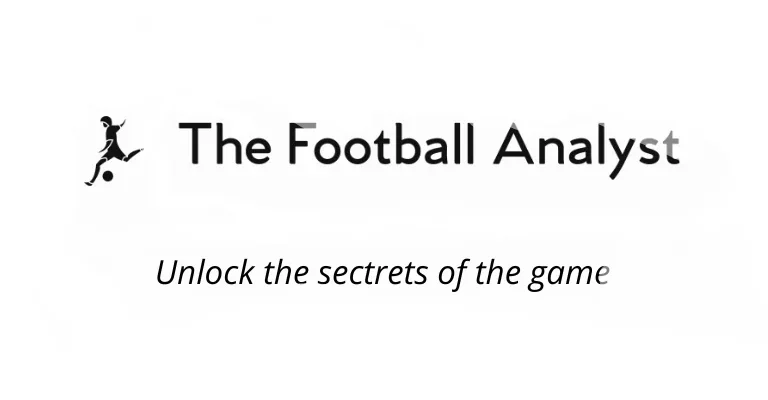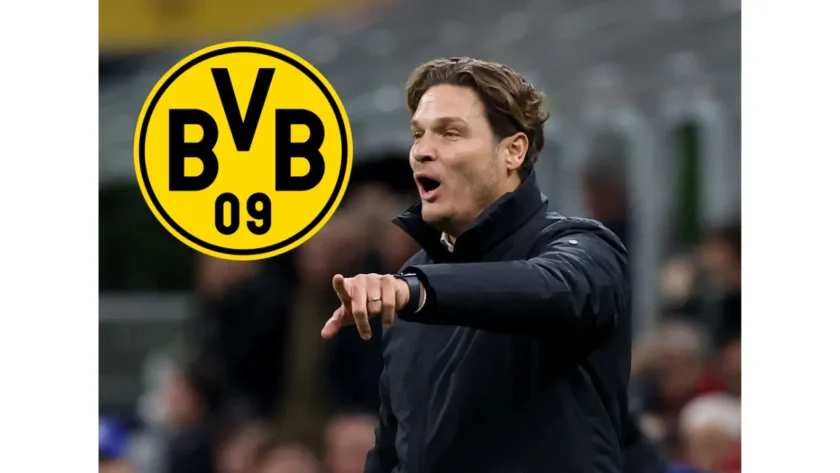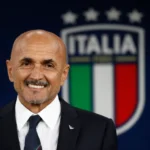Welcome to a detailed examination of Borussia Dortmund’s tactical approach under the guidance of Edin Terzić. In this analysis, we will dissect the strategic nuances and tactical intricacies employed by Terzić to shape the team’s performance on the pitch. With a keen focus on formations, player roles, and strategic principles, we aim to unravel the key elements driving Borussia Dortmund’s style of play under Terzić’s leadership. Join us as we delve into the tactical blueprint that has defined Borussia Dortmund’s approach under Edin Terzić, providing valuable insights into their on-field strategies and decision-making.
Build-up
Low Build-up
In the low build-up, Edin Terzić sets his team up in a 1-4-3-3 formation, with one number six and two number eights.
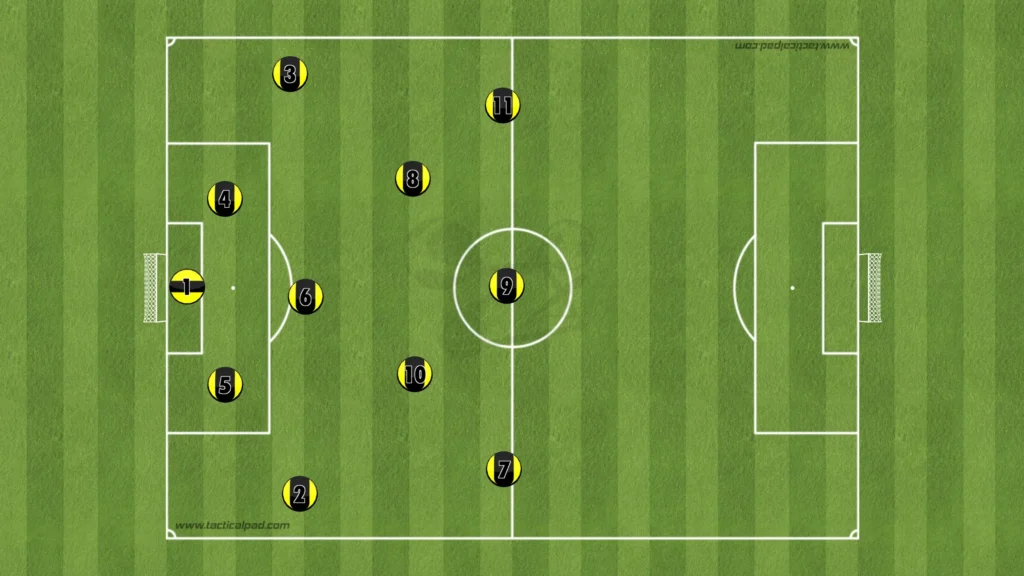
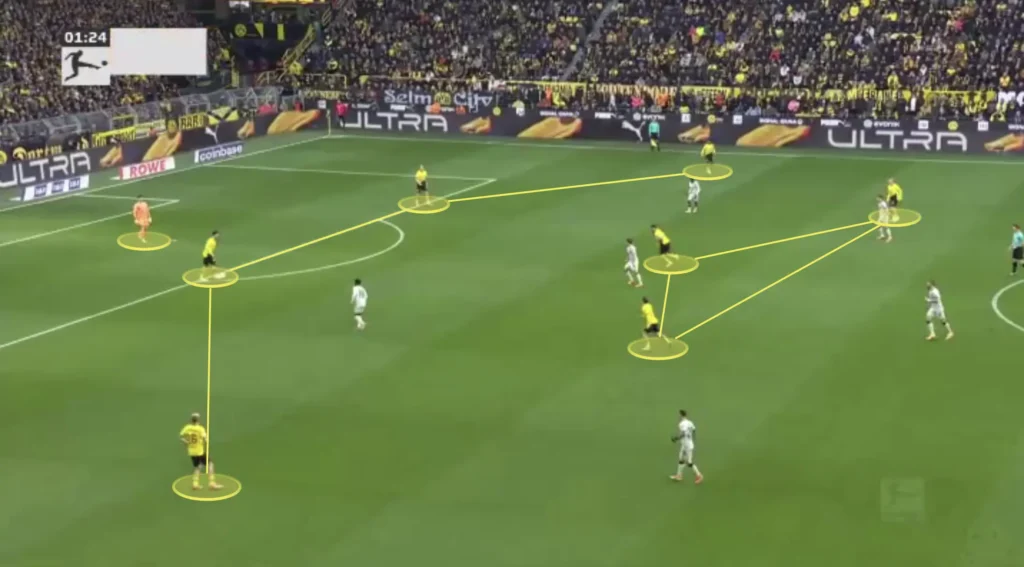
Dortmund often use fast and vertical long balls in their low build-up. Therefore, they position their attackers centrally, giving them a higher chance of winning the first and second balls.
High Build-up
Edin Terzić sets his team up in a 1-3-2-5 formation in the high build-up, with three center-backs, two holding midfielders, and five up front.
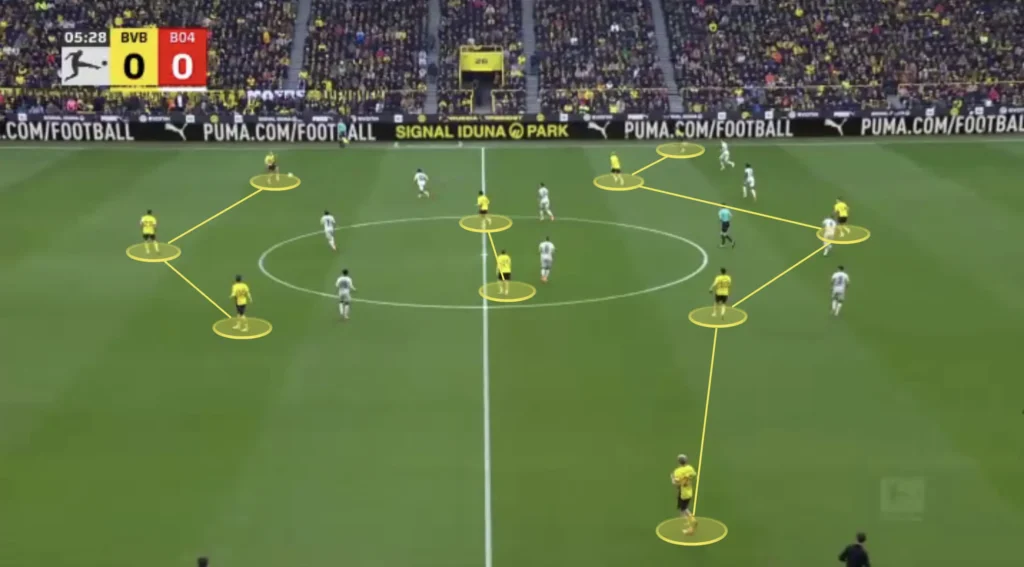
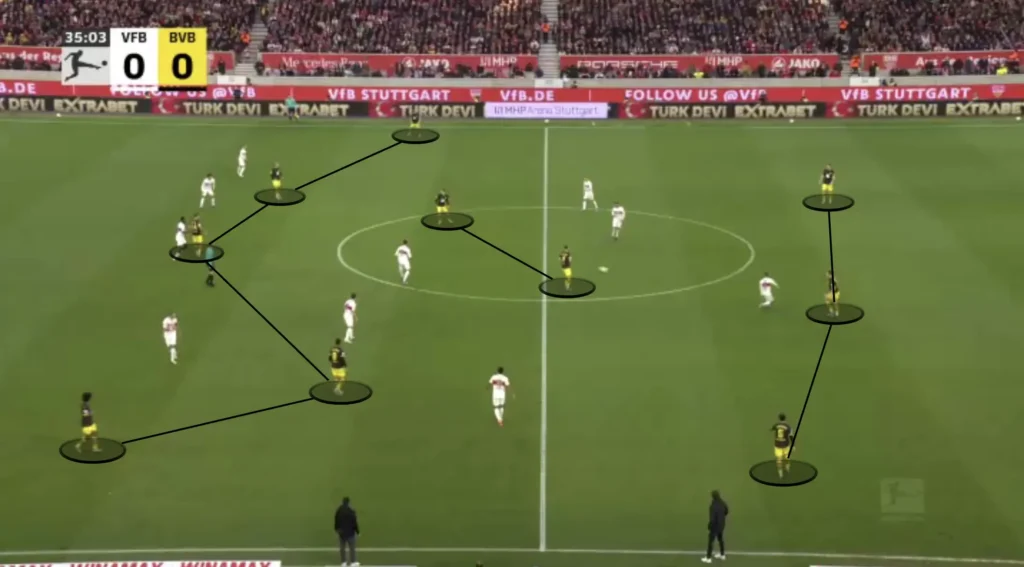
Having four central midfielders(two holding and two attacking) creates more options in the center and less space between the players. Terzić likes this because he prioritizes playing through the middle. He needs one player high and wide to pull apart the backline while the rest create numerical advantages in the midfield areas. This builds good conditions in defensive transitions, allowing more players to press when they lose the ball. Another purpose for keeping many players in the middle is to shorten the distance between them. This shortens the length of the passes, which naturally shortens the time between passes. This means the opposition players will have less time to push up and press, giving the Dortmund players more time and control.
High Backline
A massive aspect of Dortmund’s high build-up is to keep a high backline. This helps in the counter-press because they get closer to the center. Having more players close to the center who can win the ball back makes it difficult for the opposition to recycle possession. Furthermore, the high backline shortens the distance between players, shortening the time and length of the passes and preventing the opposition from pushing up their defense.
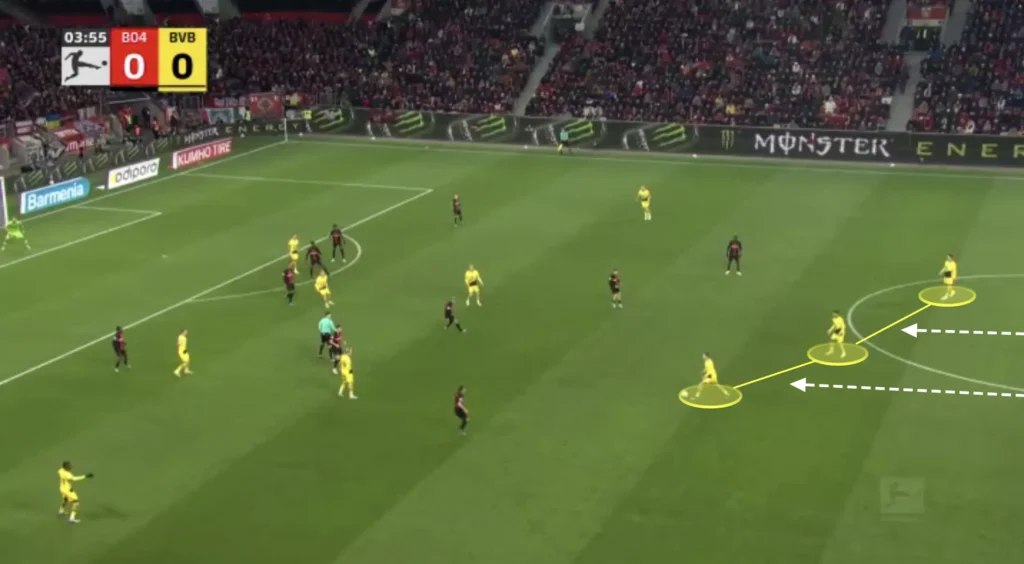
Balls in Behind
Dortmund do not shy away from using the early through-ball in behind the opposition’s backline. The attackers constantly make runs in behind when the Dortmund midfielders or defenders have the ball. This constant threat prevents the opposition from playing with a high backline and closing the space between the lines. Instead, they have to drop the backline and protect the space in behind, opening the space in the middle for the Dortmund midfielders to exploit.
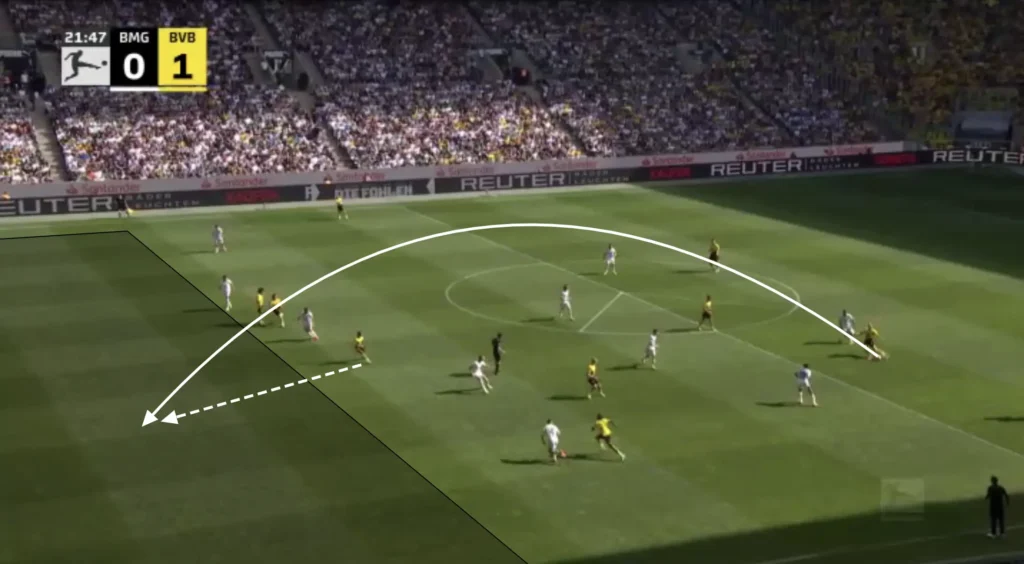
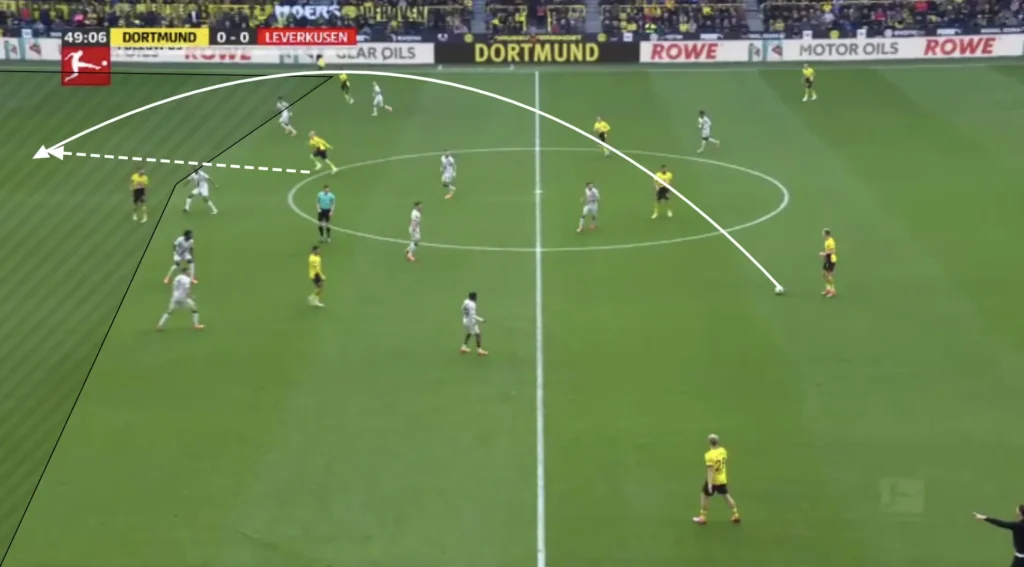
Numerical Advantages
Another massive aspect of Dortmund’s high build-up is their ability to create numerical advantages against the opposition’s defensive line. Their front five naturally becomes numerically superior against a back four, which they are great at taking advantage of.
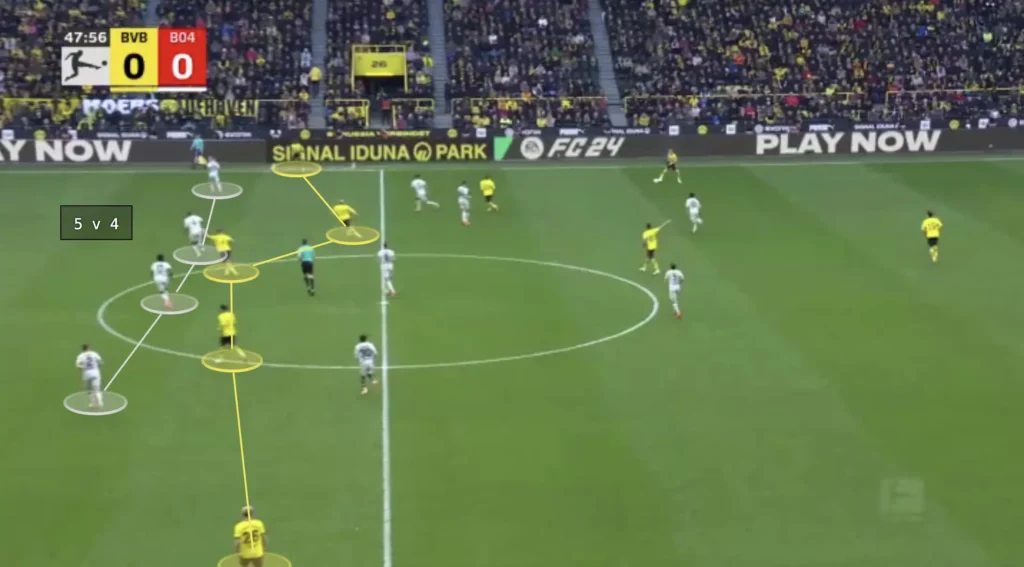
When the defending team is positioned on one side, the weak-side fullback becomes vulnerable to the long switch of play due to the 1v2 against Dortmund’s winger and attacking midfielder. Terzić’s team often capitalizes on this by getting the ball to the winger and creating many opportunities from 2v1 situations on the wing and in the half-spaces.
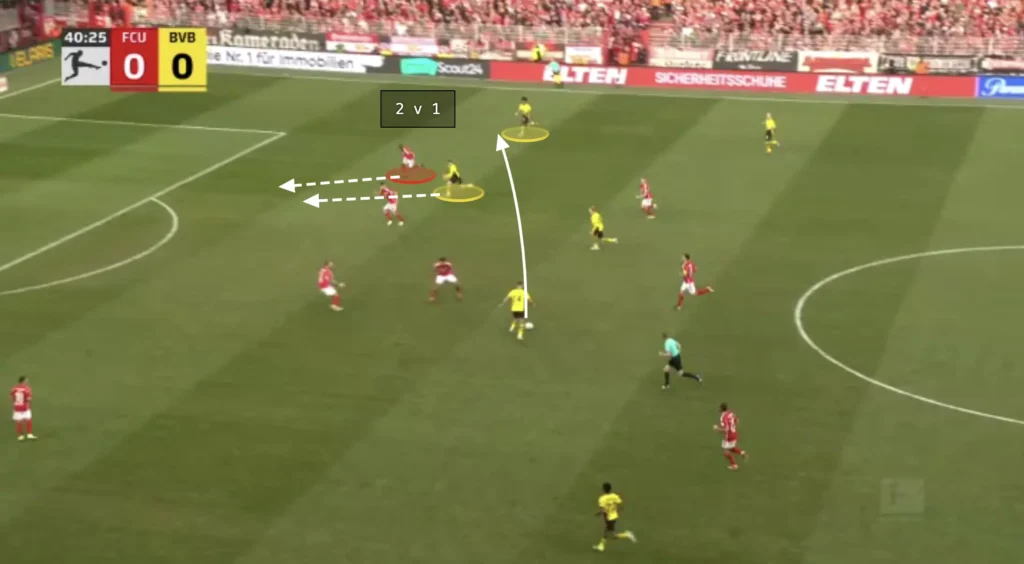
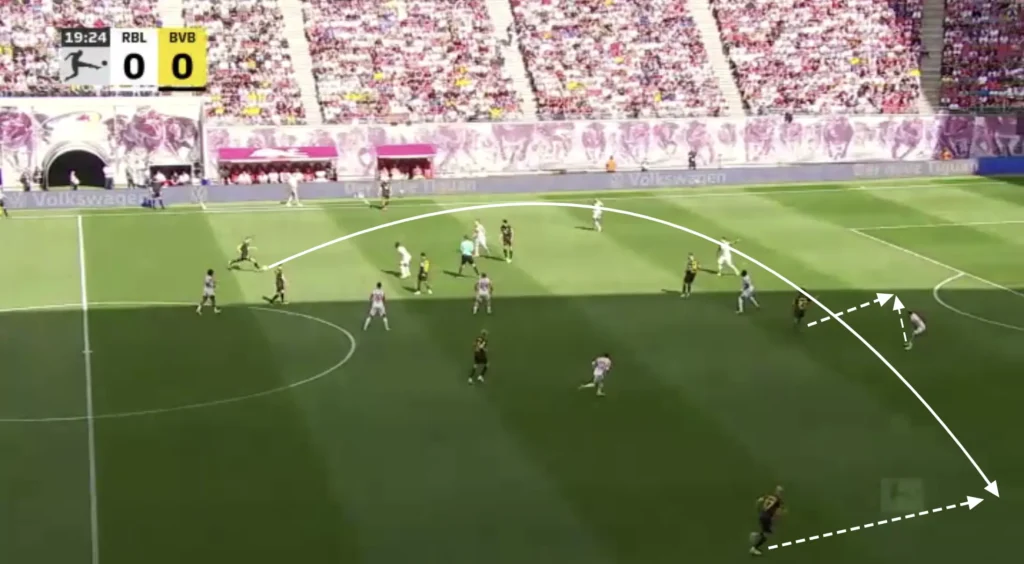
Final Third
Attacking the Half-Space
Dortmund is a great team in the final third. They always create many chances, mainly by attacking the space between the opposition center-back and fullback. They primarily do this from the wide areas with underlaps from the attacking midfielders or sometimes the wide center-backs.
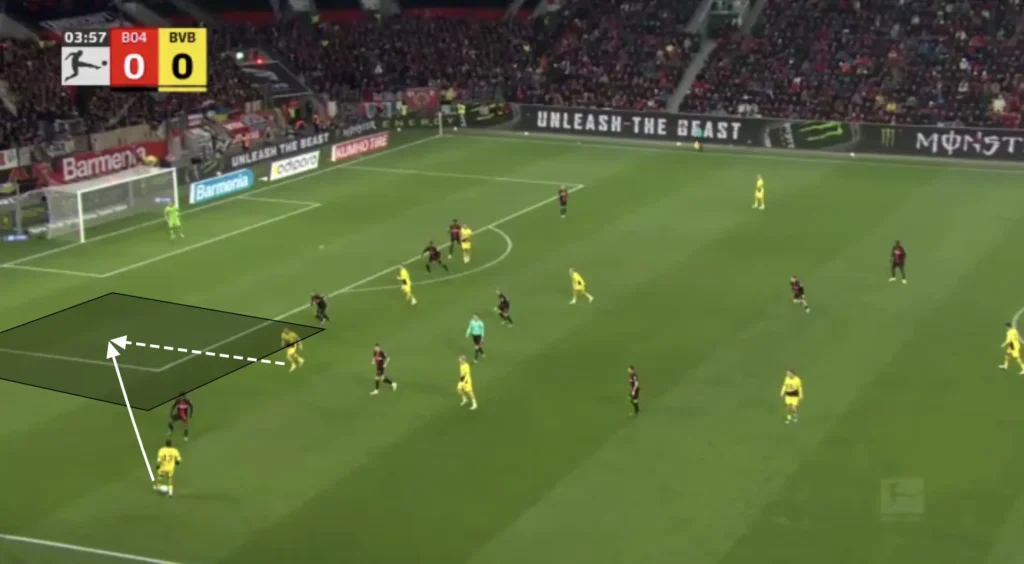
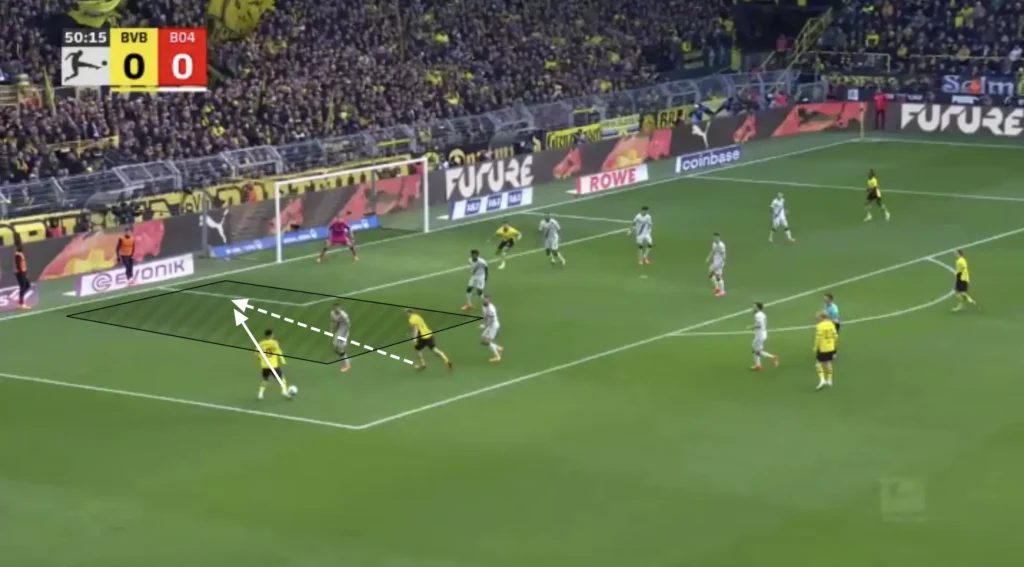
The winger can either play the ball to the underlapping player, who can cross to a teammate in the box, or take the ball inside to combine with an attacker or shoot.
Terzić’s team also exploits the space between the center-back and the fullback by playing through-balls from the midfield or backline to a running attacking midfielder.
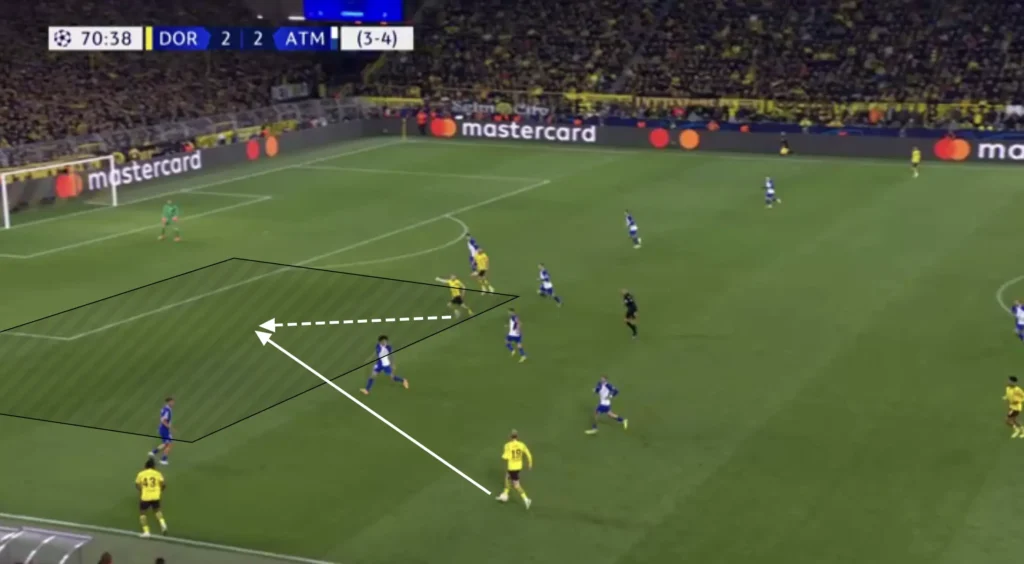
Overlaps
Dortmund also uses overlaps to produce opportunities in the final third. When the winger gets the ball, a Dortmund player quickly makes the overlap, creating a 2v1 on the wing. If the opposition fullback drops to cover the overlapping run, the winger could cut inside, taking a shot or combining with a midfielder. If the fullback covers the center, the ball can easily be played to the overlapping player, creating a crossing opportunity.
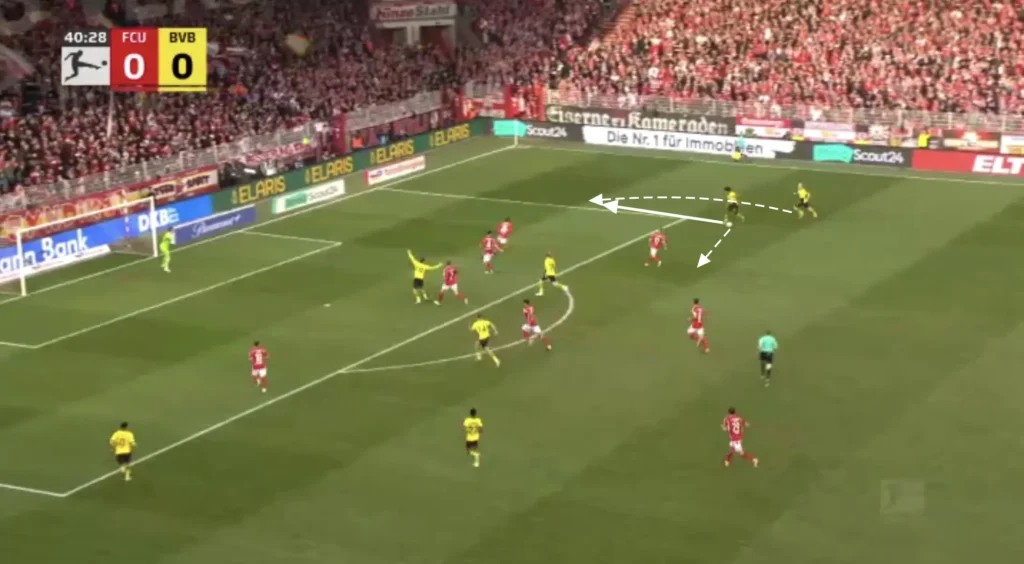
Many Players in the Box
The attacking midfielders and wingers always look to make runs into the box when the ball is in the final third, often getting four or five players into these areas to create overloads. The numerical advantages in the box force the defending team to make decisions and leave some players open.
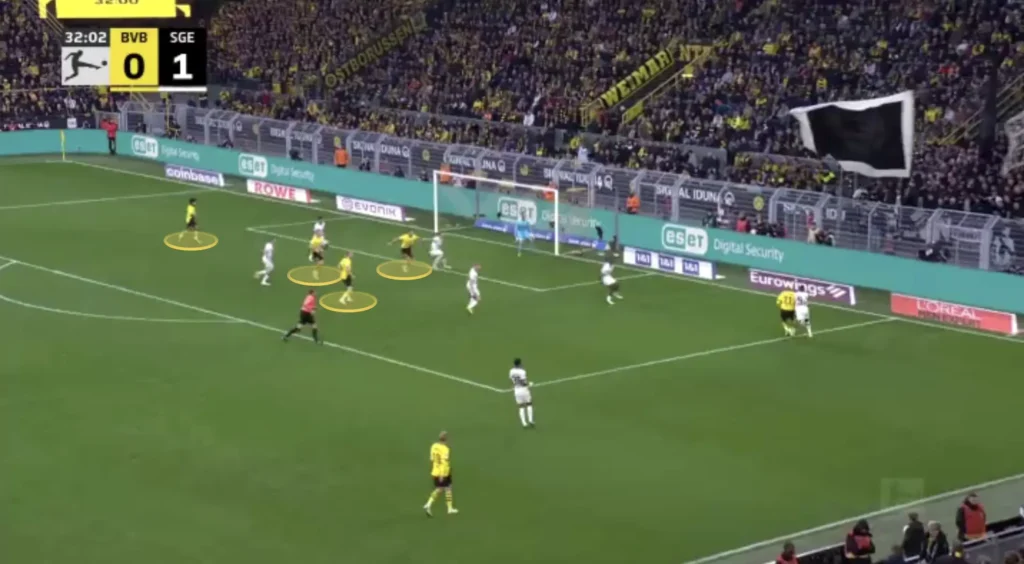
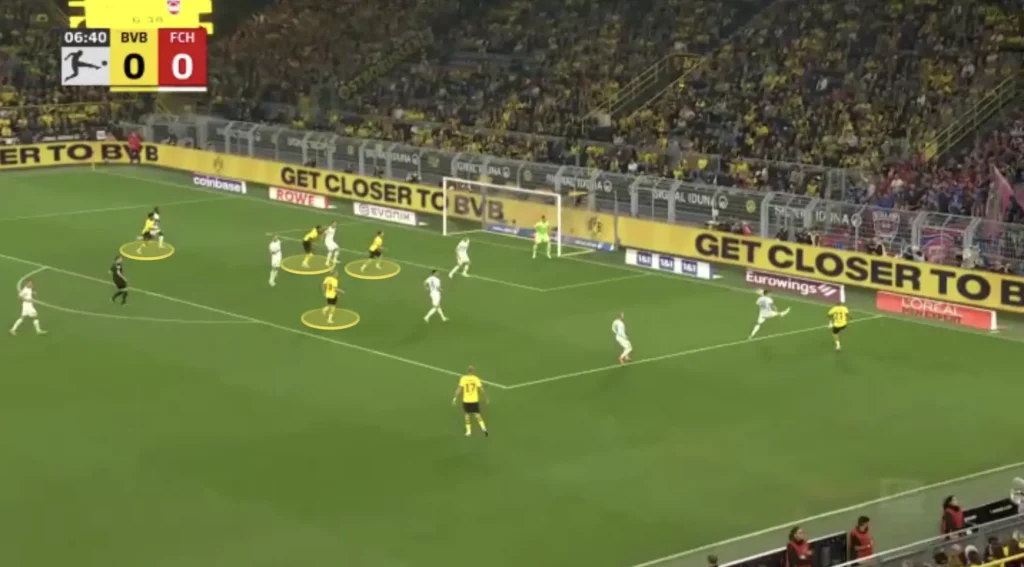
Terzić also positions many players outside the box, ready for the second balls and cut-backs. They always succeed in pushing down the opposition’s defense, which opens the space in front of the backline. The midfielders will often be found in these spaces with cut-backs, and from there, they can shoot or combine with an attacker to create goalscoring opportunities.
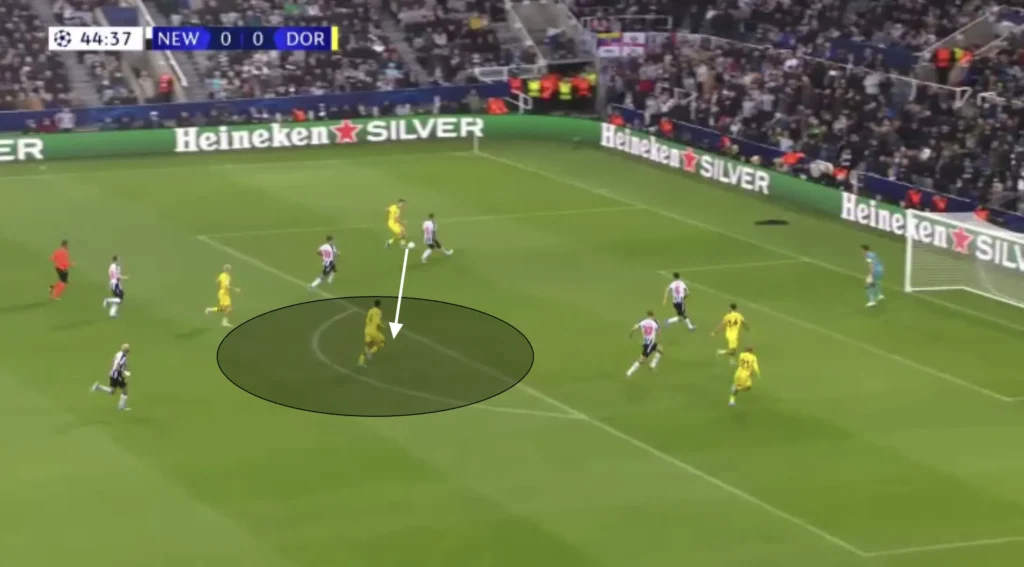
Defending
High Press
Terzić’s Dortmund presses the opposition high when possible and does so in a 1-4-1-3-2 formation:
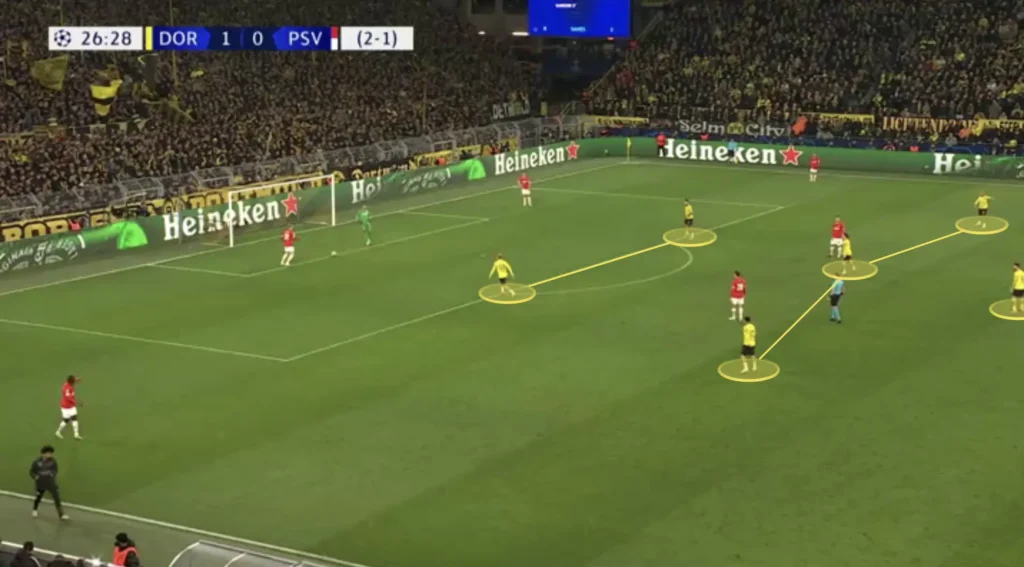
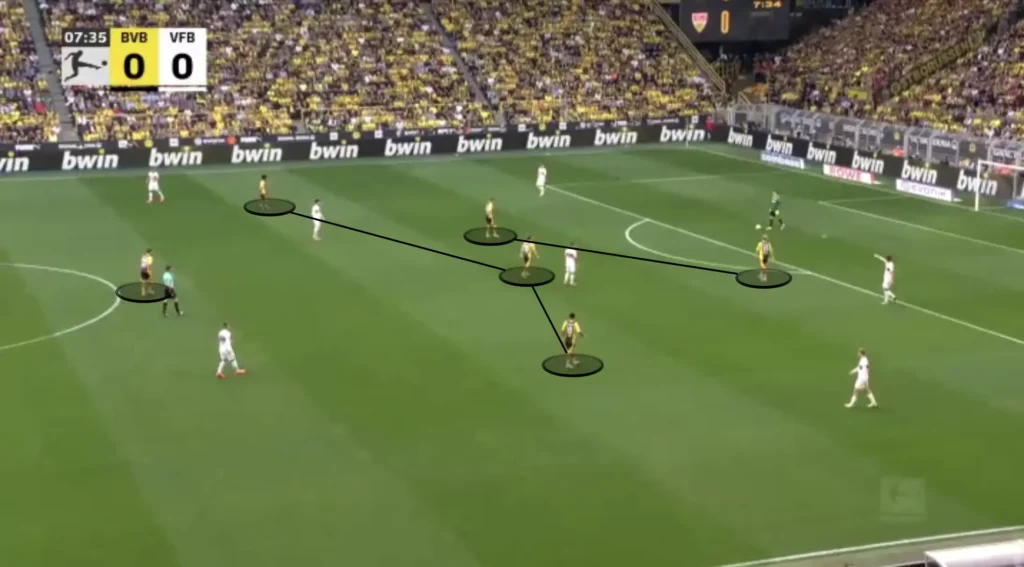
Many teams use a 1-4-3-3 formation in the build-up, which would give them a numerical advantage low down against Dortmund’s six midfielders and forwards. Terzić solves this by leaving the opposition’s weak-side fullback open and going man-to-man on the rest of the players when the ball gets played to one of the sides. The ball-side wide-midfielder pressures the opposition ball-side fullback, the holding midfielder pushes over on the opposition ball-side number-eight, and the weak-side wide-midfielder tucks in to control the opposition weak-side number-eight.
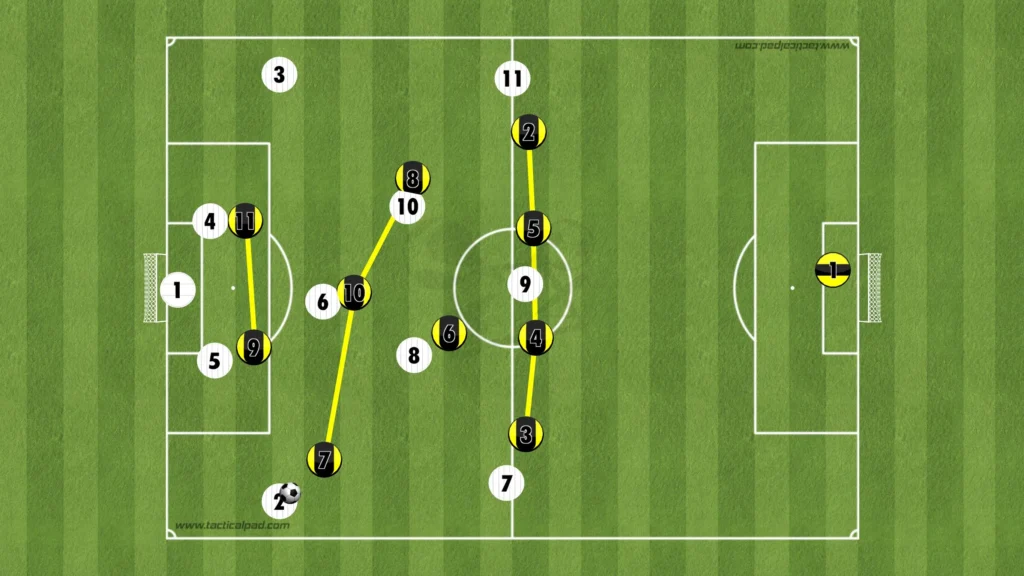
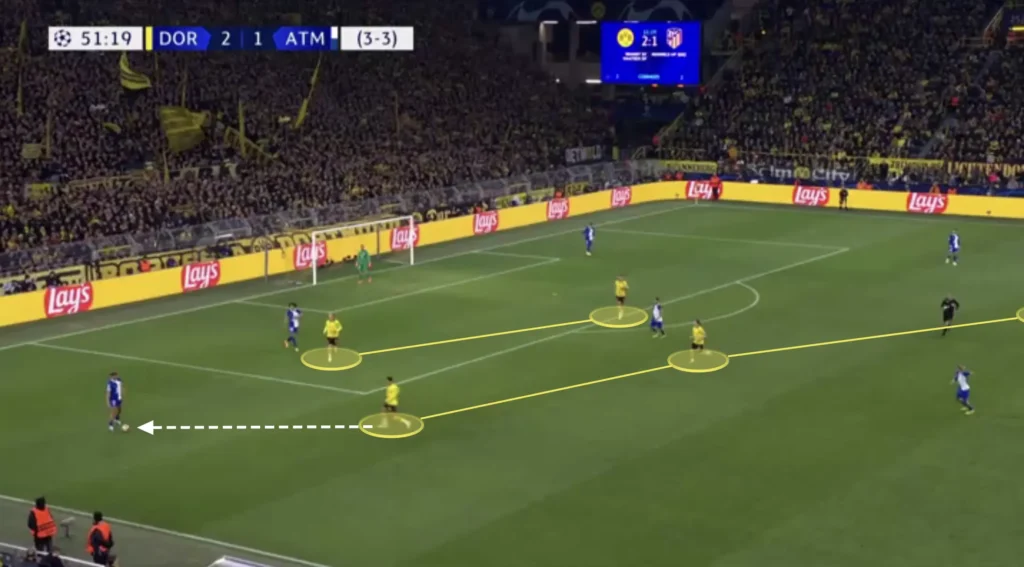
They can do this because the pass from one side to the other is too difficult for the ball-holder to make, and if he makes it, the Dortmund players have enough time to come across and win the ball. This system also gives Dortmund a numerical advantage against the opposition striker, giving them more control when defending long balls.
Low Press
In the low press, Dortmund set up in a 1-4-1-4-1 formation. They look to set up in a mid-block, always trying to stay compact while closing the center, forcing the opposition out wide.
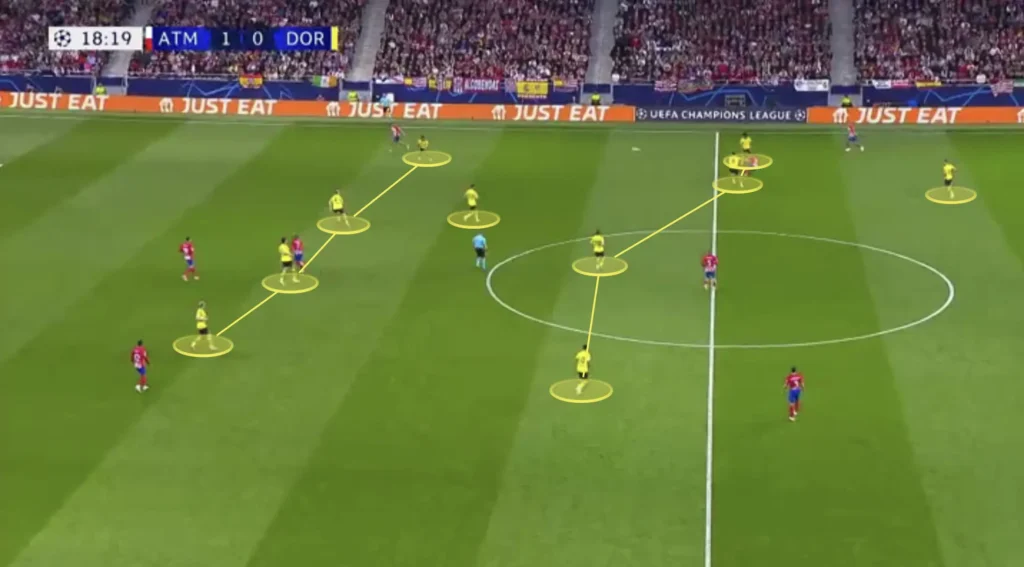
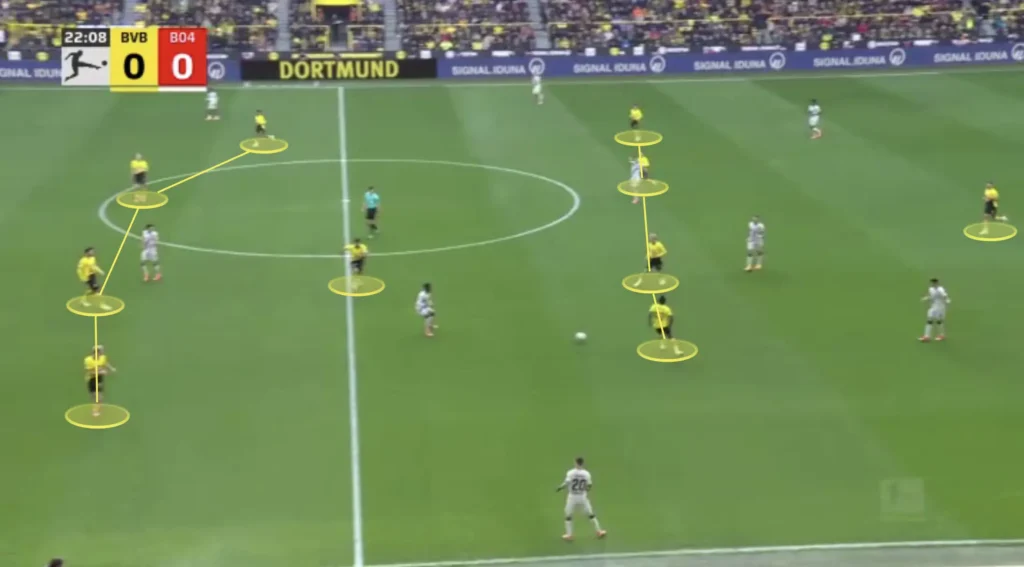
Terzić’s Dortmund also look to squeeze the pitch when defending. This means constantly pushing the team up as much as possible in the low press. They do this by pressing the center-backs with the central midfielders. The Dortmund midfielders push up when the center-backs get the ball, while the rest of the team also push up. They do this because it forces the opponent further from Dortmund’s goal, making it harder to create chances. Squeezing the pitch when possible is crucial for teams who do not necessarily look to always be in possession.
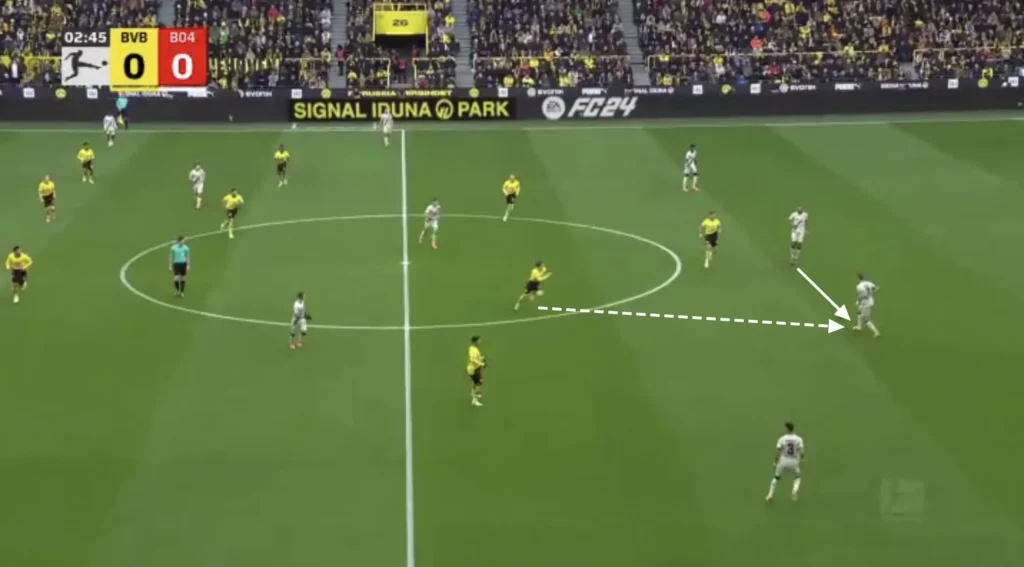
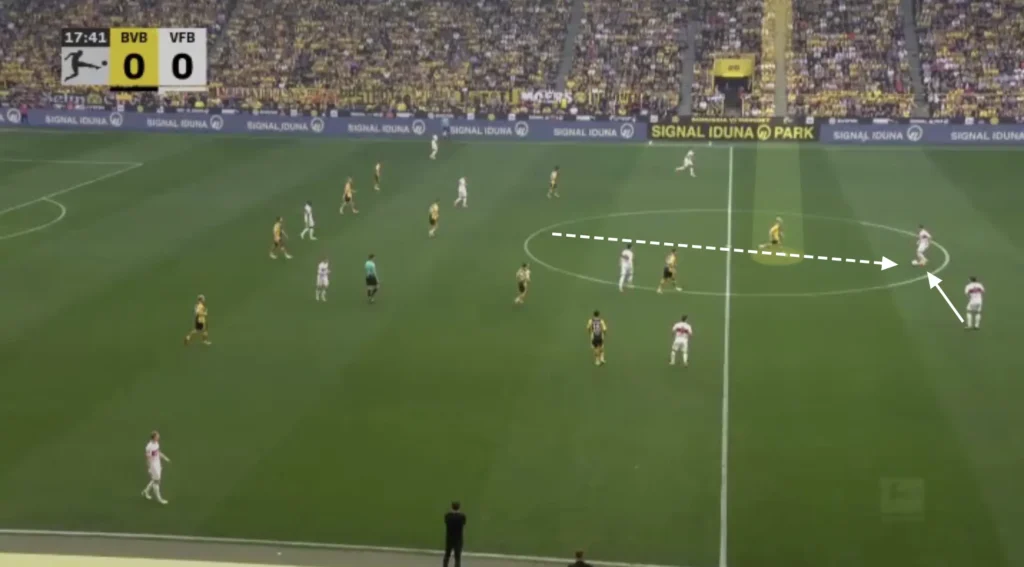
Transitions
Defensive Transitions
Positioning many players centrally, creating a numerical advantage in the midfield, creates good conditions in defensive transitions. Many players close to the ball after losing possession means that many players can work towards regaining possession. Therefore, Dortmund often successfully regains possession directly after losing it.
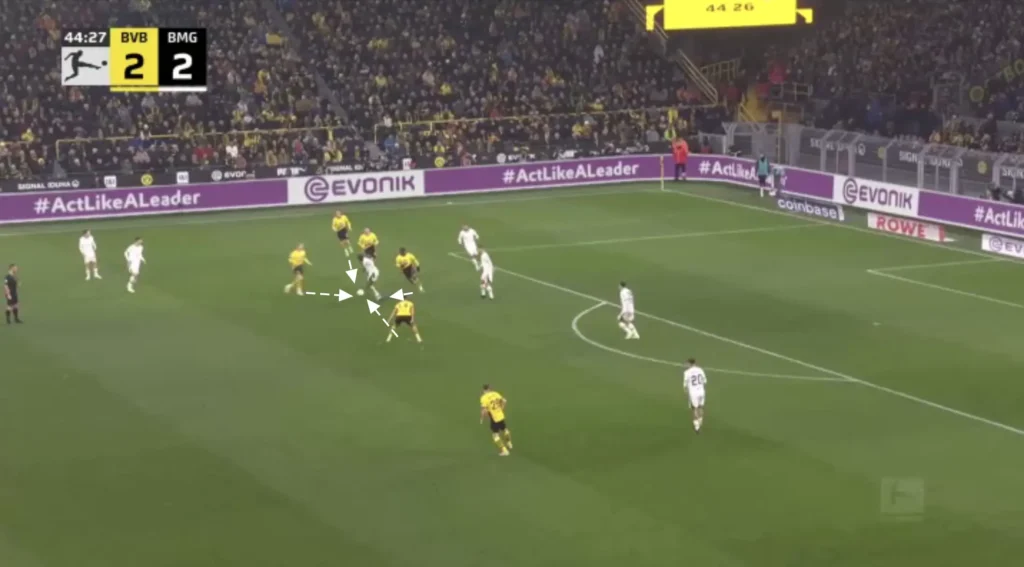
Offensive Transitions
Edin Terzić also wants his team to counterattack in their offensive transitions. They do this with a high tempo, often attacking the spaces between the center-backs and fullbacks. In addition, keeping many players centrally while defending enables them to incorporate more players into the counterattacks.
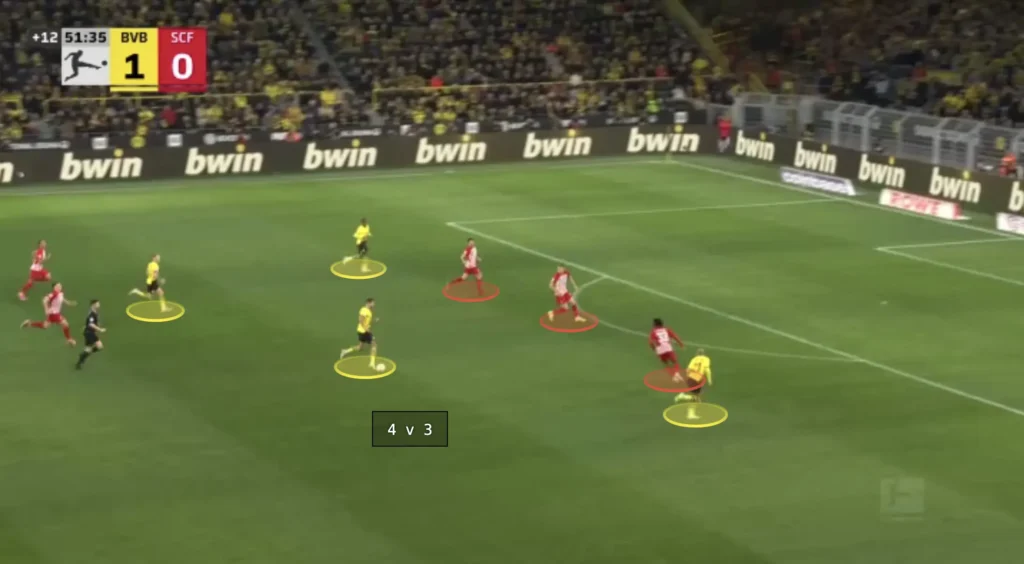
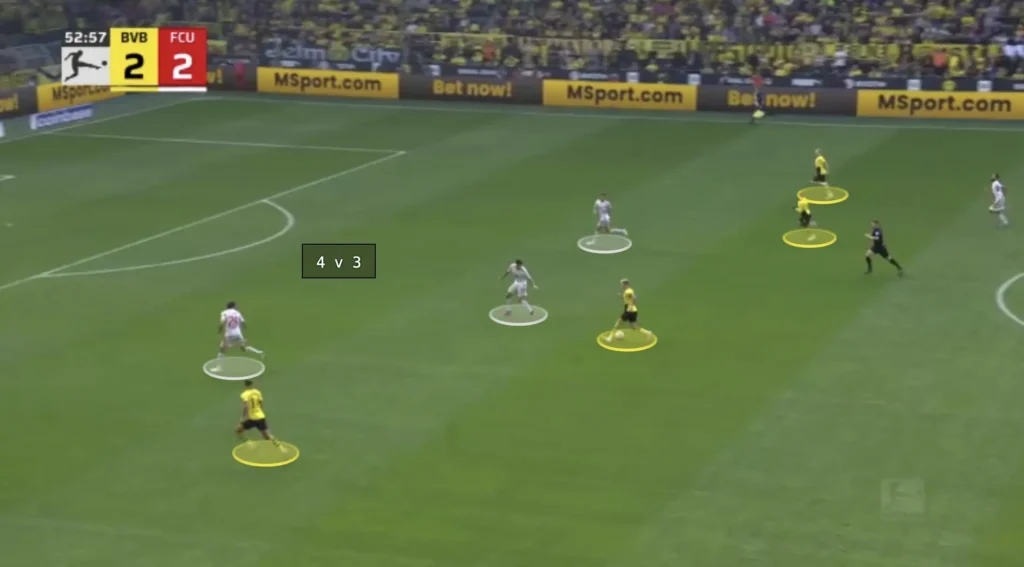
Final Thoughts
In conclusion, this tactical analysis has provided a deep dive into the strategic intricacies of Borussia Dortmund under the guidance of Edin Terzić. Throughout this examination, we’ve witnessed the implementation of Terzić’s tactical vision, characterized by fluid attacking movements, defensive solidity, and effective transitions. From his adaptability in formations to his emphasis on player positioning and pressing, Terzić has demonstrated a keen understanding of the game’s nuances. As Dortmund continues to evolve under his stewardship, Terzić’s tactical acumen will undoubtedly play a pivotal role in shaping the club’s future successes.
